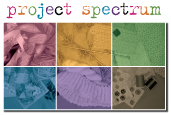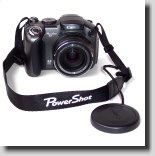
Our case is now ready for the final steps that will bring it to completion. First, cut a strip of your base fabric on the straight of grain 2″ x 10″. Fold both long raw edges evenly towards the center (wrong sides together) and press. Fold again at the center line; press.
Topstitch along both sides.

Topstitch Edges of Band
Cut your strip into six 1 1/2″ pieces. Fold each one in half and zig zag stitch along the raw edges. These pieces will form the bands that secure the cording to your case.

Six Bands
Take a measurement for the length you want your case’s cording. I measured from the base point of where I would want my case to be positioned up around my neck and back down again. Using three coordinating colors of rat’s tail, make a knot at one end (leaving about a 5-6 inch tail), braid the cords the desired length, knot again, and then trim, leaving an equal length of tail.

Cording
Take your six bands and string them onto your braided cording.

Cording With Bands
Fold your case in half and position the cording with three bands on each side. Using fabric glue, place each band within the folds of the case at bottom, center, and top. The bands should fit snugly in order to secure the cording.

Attaching Bands
Stitch along the folded edges using a stitch length of 2.5mm. You may like to backstitch at each band for extra security.

Final Stitching
I hope you enjoy making these little cases as much as I do. They make great “canvases” on which to experiment with all types of fiber art techniques.
~~~~~~~~~~~~~~~~~~~~~~~~~~~~~
Rene
Time Treasured



























